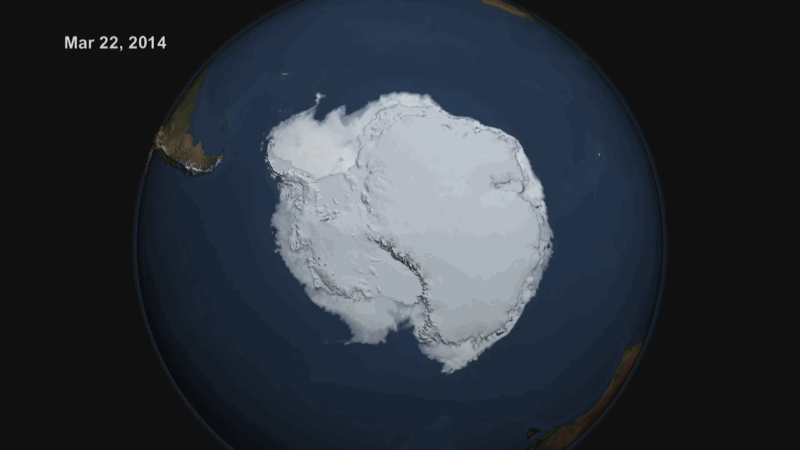Antarctica Is Gaining Ice, Not Losing It. So What Does that Mean for Global Warming?

Good news. A recent study by NASA shows data from the Ice, Cloud and land Elevation Satellite (ICES) indicates that there have been “mass gains from snow accumulation” that “exceeded discharge losses” from the thinning glaciers.
For a long time, researchers attributed the cause of rising sea levels to melting land-based ice and thermal expansion. However, this study puts the former under scrutiny on at least one major continent: Antarctica.

The data shows the accumulation of snow along East Antarctica adds enough ice to offset the glacial thinning going on in West Antarctica. This snowfall has been going on for the past 10,000 years, starting at the end of the last Ice Age. Jay Zwally, a glaciologist with NASA’s Goddard Space Flight Center, explained in a press release that “the air became warmer and carried more moisture across the continent, doubling the amount of snow dropped on the ice sheet.”
NASA’s data indicates that ice sheet thickness, measured by satellite altimeters, is increasing in East Antarctica and the interior of West Antarctica by 1.7cm. But researchers are still seeing losses in the Antarctic Peninsula, and Thwaites and Pine Island region that are unprecedented. If the pace continues, the losses in ice will soon outweigh the gains made by falling snow.
Zwally estimates that “the losses will catch up with the long-term gain in East Antarctica in 20 or 30 years.”
This news also adds some confusion. Researchers have noted a rise in the world’s sea levels since the 20th century–1,01 to 2.5mm per year. Out of this total sea level rise Antarctica’s melting ice sheets contributed around 0.27 millimeters per year.
“The good news is that Antarctica is not currently contributing to sea level rise, but is taking 0.23 millimeters per year away. But this is also bad news,” Zwally said. “If the 0.27 millimeters per year of sea level rise attributed to Antarctica in the IPCC report is not really coming from Antarctica, there must be some other contribution to sea level rise that is not accounted for.”
***
Natalie has been writing professionally for about 6 years. After graduating from Ithaca College with a degree in Feature Writing, she snagged a job at PCMag.com where she had the opportunity to review all the latest consumer gadgets. Since then she has become a writer for hire, freelancing for various websites. In her spare time, you may find her riding her motorcycle, reading YA novels, hiking, or playing video games. Follow her on Twitter: @nat_schumaker
Photo Credit: Joe Raedle / Getty Staff
Map: Jay Zwally/ Journal of Glaciology


